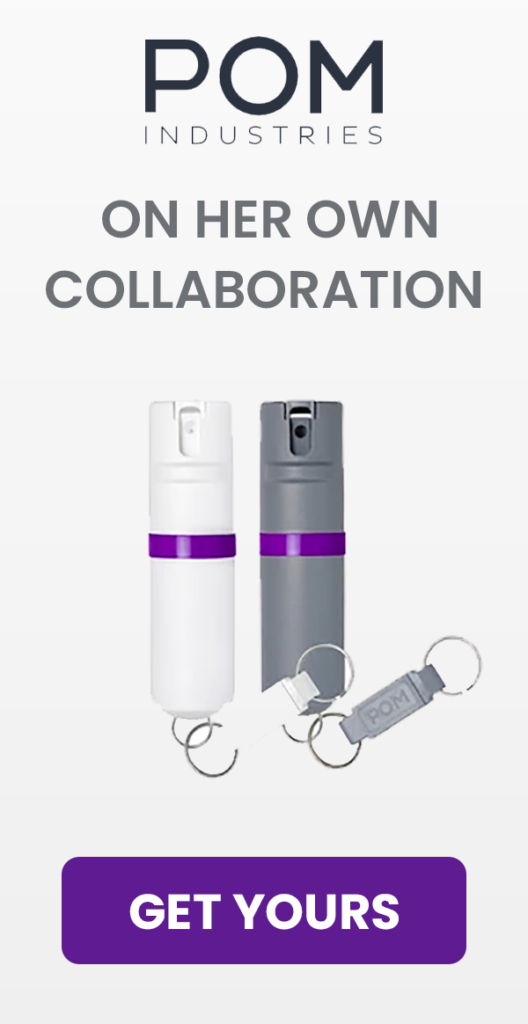
Pepper spray is on my mind, and in my eye, as I taught the basics to a friend this weekend and am preparing to teach a few seminars on it next month. Keep an eye here for the announcement and sign-ups; I’m finalizing details but save the date of September 17, in Epping, NH. In any case, our session made me think about a really interesting dichotomy that people have about pepper spray. On one side, there are folks who don’t recommend it or recommend using a gel or foam variant because of the perceived dangers of blowback or other forms of cross-contamination where the defender gets a dose of their own medicine. That incidental exposure is thought of as so awful and potentially dangerous that it’s not worth carrying pepper spray at all. On the other side, folks will argue that pepper spray will, at best, anger an attacker but not actually do anything useful to stop or disable them and therefore, it’s worthless to carry because it won’t work. The truth, of course, is somewhere in between, and depends on a number of factors. Let’s talk about a few.
Before I start, be aware that everything I have to say is predicated on using a high-quality pepper spray. If you aren’t sure what that is or means, hit up my Self-Defense Resource Center and read the first two Pepper Spray 201 articles. Good OC, oleoresin capsicum, a shorthand for the active ingredient in pepper spray, is necessary for the full effect in either direction, and I’m assuming its use when looking at both sides of the debate.
Any liquid that is sprayed into the air has the potential to end up somewhere it wasn’t aimed. Being upwind might help, but isn’t always practical. You can’t, after all, ask an attacker to shift a little bit so that the wind isn’t blowing in your face as you point your OC at them. You might be able to maneuver them into a better position, but there’s no guarantee you’ll be successful before you must use the spray. Fortunately, getting some secondary exposure to the active ingredient in pepper spray won’t be nearly as bad as getting the primary exposure from being at the targeting end of the nozzle because you’ll be getting far less of it. For one, pepper spray for regular people is to help you create and maintain distance. You will ideally use it when you are 10-12 feet from an attacker, and use the moments when they are reacting to the initial spray to beat feet and get away. You most likely won’t be moving towards where the mist is hanging in the air, or within range for the liquid itself to get on you. For another, you will be expecting the possibility of getting some of the spray on you, which means you can be mentally prepared to battle through any of the relatively minor effects you might suffer.
As part of our session, my friend and I sprayed a short burst from her new POM Industries pepper spray (link to the OHO affiliate pack that helps support my work!) to test the nozzle. Even with high quality product, it’s helpful to do that – outside, of course – because weird manufacturing defects can occur and you don’t want to find out in your moment of need that you grabbed a unit with a rare mechanical problem. You’ll also get a chance to catch a little whiff of the spray. It might make you cough or sneeze, or make your eyes water a bit, but usually won’t have much more effect than that. I’m not arguing that it’s going to be pleasant. However, it’s unlikely to be disabling or even terribly distressing, especially if you know that it might happen. The majority of the effect will be suffered by the person who is directly hit with the OC. As the sprayer, your experience will generally be limited to the respiratory effects at most. Because there are some significant downsides to using a gel or foam formulation of pepper spray – notably, how long they can take to begin working after delivery to the target – sticking with fast-acting stream-style sprays means you’ll get better results on the bad guy and, as my friend saw, you don’t need to fear a little bit blowing back on to you.
But the fact that pepper spray won’t affect you enormously as the defender doesn’t mean it won’t have a strong effect on the person you are spraying. To demonstrate a limited reaction to my friend, I used a technique that Greg Ellifritz of Active Response Training told me about. I wiped a tiny amount of pepper spray into the outer corner of one of my eyes. If you look closely at the picture, you can tell which one. While I didn’t get the same response as when I’ve had a complete dose sprayed into both eyes, it was close enough to show a lot of how a person is likely to react if they are. I got the involuntary eye closure, the excessive tearing (lacrimation), the painful burning sensations, and the runny nose. The only part I got to skip was the coughing from breathing the spray in. It still sucked. However, I was able to carry on a coherent and detailed conversation throughout. If I was determined to fight, I could have. I just wouldn’t have been as good at it as I would have been without the OC, because I would be physically diminished and distracted. It’s hard to hit, grab, or chase after someone when your eyes really really don’t want to be open, and it’s hard to grapple with them when your eyes and nose are flooded with tears and snot and you can’t stop coughing. Pepper spray, as Chuck Haggard of Agile/Training and Consulting will tell you, takes the fight out of people and they have to work to get it back.
The physical effects of having OC applied to your eyes and other mucous membranes aren’t a choice, and you can’t become immune to them. Outside of extraordinarily rare instances, an adequate concentration of high quality ingredients will cause what I described. How long it takes to start working depends on the product chosen and how precisely you were able to get it to the right parts of the body, but it will work. It won’t work forever so you’ll have limited time to take advantage of its effects, and it won’t necessarily stop someone in their tracks so you should expect to need to follow up with some other action. However, you might get lucky and they might give up as soon as they feel the burn. That does happen, just not all the time. When it doesn’t, you’ll still have some time to escape to safety and you’ll still have a better chance of being able to do so. Here’s the bottom line: if you are looking for something guaranteed to be effective at making an attack end immediately, this ain’t it – and nothing is. But it does have good odds of doing what it’s supposed to do if you pick the right product and use it correctly, and have realistic expectations of what the results will be so that you can prepare accordingly when you include it in your self-defense plan.




